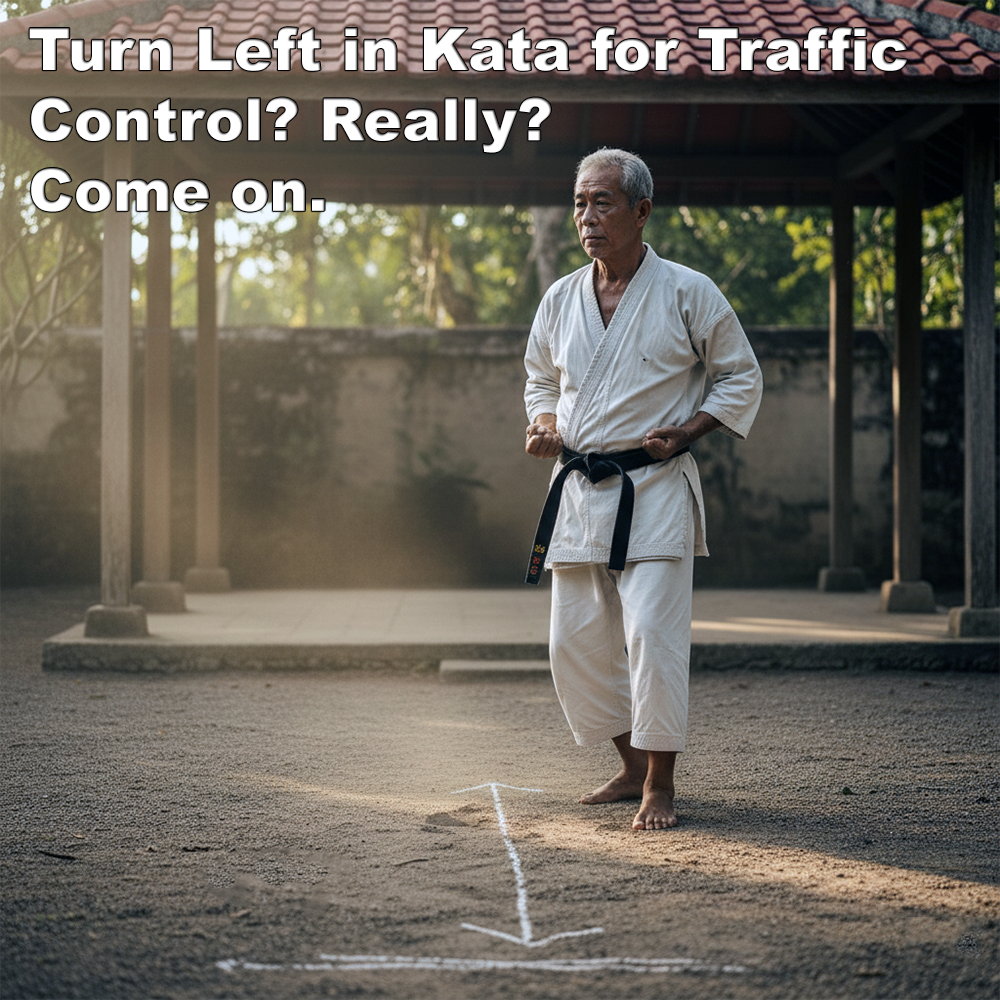
(Approx 2 minute 20 second read)
There is a staggering amount of misinformation surrounding the martial arts, and karate in particular.
.
I don’t know about you guys, but it pops up in my social media feeds every day. The fact that anyone can tell truth from fiction at all is remarkable.
.
Recently I saw a social media post asking: “Why do karate katas begin to the left?” The answer given was enough to make me consider taking up tiddlywinks.
.
I’m not going to repeat all the reasons he gave because they were just ridiculous, but this one made my spidey senses kick in.
.
The “practical reason”.
.
Great, here I was expecting some reality to appear in his conclusions. But alas no. He said, “When a dojo full of students begins a kata, starting to the left keeps everyone moving in the same direction without clashing.” Oh crikey.
.
Everyone’s entitled to an opinion, but when you’re teaching others, opinions need to rest on fact. Mistakes happen, we all make them, but explanations like this aren’t just mistakes; they ignore common sense and strip kata of their real meaning.
.
The idea that there is a method in this practical art designed to prevent dojo traffic jams is truly absurd.
.
So, if it’s not for traffic control, why the strong bias toward starting left in so many foundational kata (like the Pinan series)?
.
The true answer is rooted in combative strategy and the reality of self-defense. Think about the most common threat: a high percentage of people are right-handed. This means the most immediate and powerful attack is most likely coming from your opponent’s dominant right side, even if preceded by something from the left (push, shove, grab, etc.).
.
Moving immediately to your left achieves a critical objective: it shifts your body off the line of that right-sided attack, while simultaneously putting you in a perfect position to counter or control them. It’s a foundational lesson in dominating the encounter, never stay on the center line of danger.
.
Furthermore, the overall floor pattern – the embusen – is what actually dictates the geometry of the movements.
.
While Okinawan kata naturally stay within a small performance area, the modern “rule” that a kata must start and end on the exact same spot (kiten 起点 “starting point” or “point of origin”) is largely a Japanese influence.
.
This strict adherence to symmetry, where every step taken away is mirrored by a movement back, was not necessarily a concern for the original Okinawan masters, but it may have served a practical purpose: allowing the full system to be rehearsed efficiently in the limited space of a dojo. However, it’s about effective training design and spatial awareness, not gymnasium etiquette.
.
Kata weren’t designed to keep students from bumping into each other, nor as empty gestures of philosophy and tradition. They are lessons in movement, survival, and strategy, and they deserve more than being explained away with comforting clichés.
.
So no, kata don’t start to the left to stop students from colliding in the dojo. They start left because they teach strategy and practical movement, how to move with intent and stay off the line of danger. Forget that, and we risk turning a fighting art into a folk tale.
.
And really, isn’t it time we used a bit of common sense?
.
.
Written by Adam Carter – Shuri Dojo
